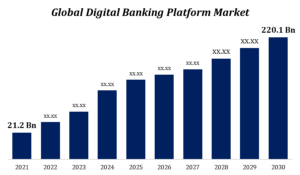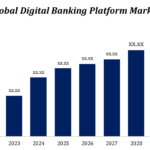Central Bank Digital Currencies (CBDCs): The Future of Money
As digital technology continues to evolve and reshape various aspects of our lives, central banks worldwide are exploring new avenues to enhance financial systems. Among these innovations, Central Bank Digital Currencies (CBDCs) have emerged as a significant development in the realm of modern finance. But what exactly are CBDCs, and why are they generating so much interest? This blog delves into the concept of CBDCs, their potential benefits and challenges, and their impact on the future of money.
What Are Central Bank Digital Currencies (CBDCs)?
Central Bank Digital Currencies (CBDCs) are digital forms of a country’s national currency issued and regulated by its central bank. Unlike cryptocurrencies such as Bitcoin or Ethereum, which operate on decentralized networks and are not backed by any central authority, CBDCs are centralized and represent a digital version of fiat money.
CBDCs are designed to function alongside physical cash and traditional digital payments, offering a new way for people to conduct transactions. They aim to combine the advantages of digital payments with the security and stability provided by central banks.
Types of CBDCs
CBDCs generally fall into two main categories:
- Retail CBDCs: These are intended for use by the general public for everyday transactions. Retail CBDCs would allow consumers to use digital money for purchases, bill payments, and other routine financial activities. They are designed to be accessible to individuals and businesses, providing a secure and efficient means of payment.
- Wholesale CBDCs: These are meant for use by financial institutions and large-scale transactions. Wholesale CBDCs aim to improve the efficiency and security of interbank settlements and other large-value financial transactions. They are not intended for public use but for enhancing the existing financial infrastructure.
Potential Benefits of CBDCs
- Enhanced Financial Inclusion: CBDCs have the potential to provide financial services to unbanked and underbanked populations. By offering a digital means of payment and savings that does not require a traditional bank account, CBDCs can help bridge the gap for those who lack access to conventional financial services.
- Increased Payment Efficiency: CBDCs could streamline payment processes, reducing transaction times and costs. With real-time settlement capabilities, digital currencies could improve the speed and efficiency of both domestic and international payments.
- Improved Security: As central bank-backed entities, CBDCs are expected to offer a high level of security and stability. They are less susceptible to fraud and cyber attacks compared to decentralized cryptocurrencies, and their design can incorporate robust security measures to protect users’ funds.
- Reduced Transaction Costs: By eliminating intermediaries and leveraging blockchain technology, CBDCs could lower transaction fees associated with payments and transfers. This reduction in costs can benefit consumers and businesses alike.
- Enhanced Monetary Policy Implementation: CBDCs could provide central banks with new tools for implementing monetary policy. For example, central banks could use CBDCs to distribute stimulus payments directly to citizens, or to adjust interest rates and control inflation more effectively.
Challenges and Considerations
- Privacy Concerns: The implementation of CBDCs raises important questions about data privacy and surveillance. Ensuring that CBDCs are designed to protect users’ privacy while still allowing for necessary regulatory oversight is a significant challenge.
- Cybersecurity Risks: While CBDCs are expected to be secure, they are not immune to cyber threats. Central banks will need to implement stringent cybersecurity measures to protect against potential attacks and ensure the integrity of the digital currency system.
- Impact on Financial Stability: The introduction of CBDCs could disrupt existing financial systems and banking practices. Central banks must carefully consider how CBDCs will affect traditional banks, including potential shifts in deposits and the impact on lending practices.
- Technological Infrastructure: Developing and maintaining the technological infrastructure required for CBDCs is a complex and costly endeavor. Central banks must ensure that the digital currency system is reliable, scalable, and capable of handling high transaction volumes.
- Regulatory and Legal Framework: The implementation of CBDCs will require comprehensive regulatory and legal frameworks. Central banks and policymakers must address issues related to cross-border transactions, digital identity, and compliance with existing financial regulations.
Global Developments in CBDCs
Several countries are already exploring or piloting CBDCs, each with its own approach and objectives:
- China: The People’s Bank of China (PBOC) has been at the forefront of CBDC development, with its Digital Currency Electronic Payment (DCEP) initiative. China’s digital yuan is being tested in various cities and aims to enhance payment efficiency and financial inclusion.
- European Union: The European Central Bank (ECB) is exploring the potential of a digital euro. The ECB is conducting research and public consultations to understand the implications and design features of a potential digital euro.
- United States: The Federal Reserve has been studying the concept of a digital dollar. While there is no official digital currency yet, the Federal Reserve is evaluating the potential benefits and challenges of introducing a CBDC.
The Future of CBDCs
As central banks continue to explore and develop CBDCs, the future of money is poised for transformation. CBDCs have the potential to enhance financial inclusion, improve payment efficiency, and provide new tools for monetary policy. However, addressing the challenges and ensuring the successful implementation of CBDCs will require careful planning and collaboration between central banks, policymakers, and technology providers.


































